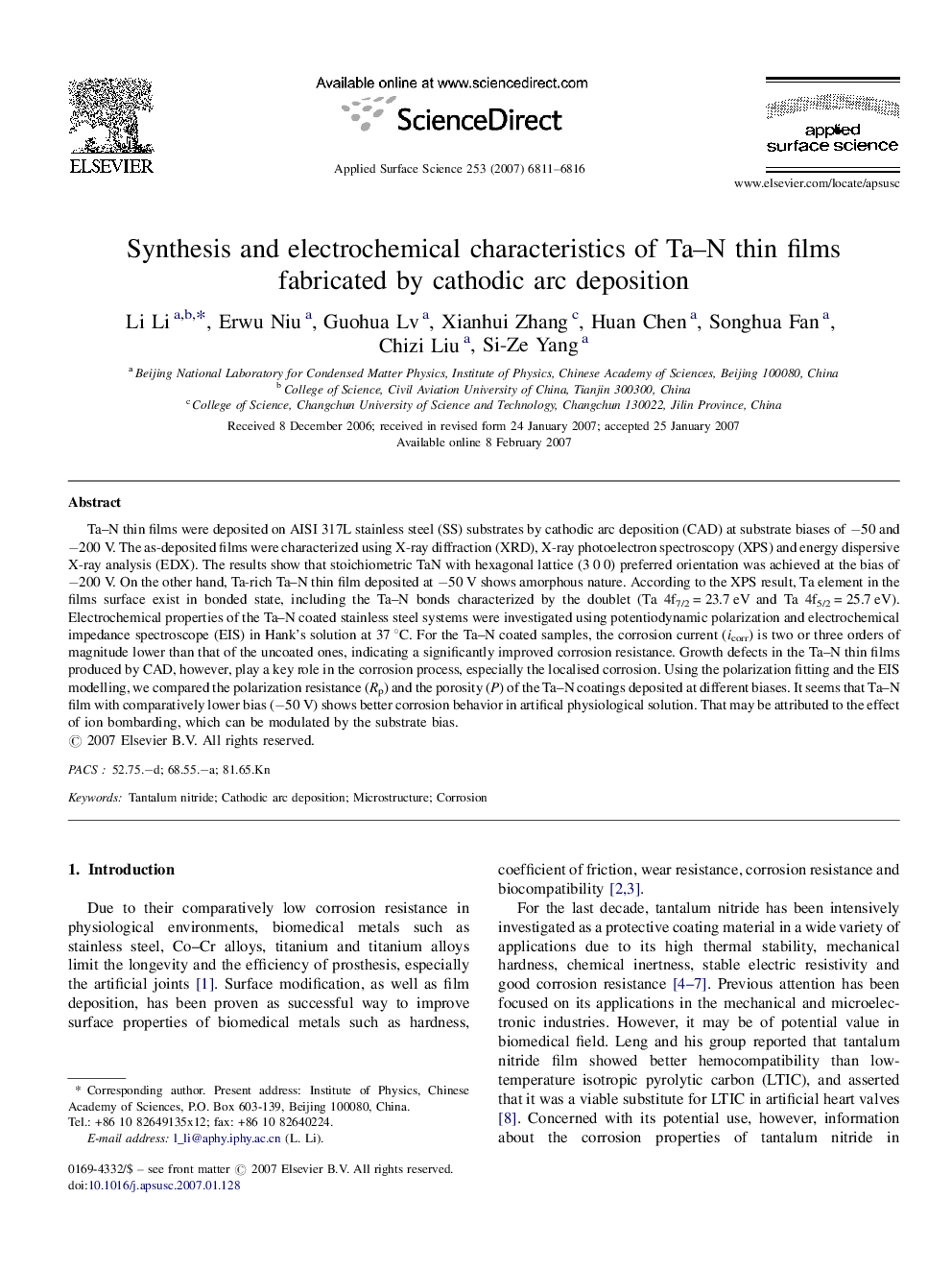| Article ID | Journal | Published Year | Pages | File Type |
|---|---|---|---|---|
| 5364296 | Applied Surface Science | 2007 | 6 Pages |
Ta-N thin films were deposited on AISI 317L stainless steel (SS) substrates by cathodic arc deposition (CAD) at substrate biases of â50 and â200 V. The as-deposited films were characterized using X-ray diffraction (XRD), X-ray photoelectron spectroscopy (XPS) and energy dispersive X-ray analysis (EDX). The results show that stoichiometric TaN with hexagonal lattice (3 0 0) preferred orientation was achieved at the bias of â200 V. On the other hand, Ta-rich Ta-N thin film deposited at â50 V shows amorphous nature. According to the XPS result, Ta element in the films surface exist in bonded state, including the Ta-N bonds characterized by the doublet (Ta 4f7/2 = 23.7 eV and Ta 4f5/2 = 25.7 eV). Electrochemical properties of the Ta-N coated stainless steel systems were investigated using potentiodynamic polarization and electrochemical impedance spectroscope (EIS) in Hank's solution at 37 °C. For the Ta-N coated samples, the corrosion current (icorr) is two or three orders of magnitude lower than that of the uncoated ones, indicating a significantly improved corrosion resistance. Growth defects in the Ta-N thin films produced by CAD, however, play a key role in the corrosion process, especially the localised corrosion. Using the polarization fitting and the EIS modelling, we compared the polarization resistance (Rp) and the porosity (P) of the Ta-N coatings deposited at different biases. It seems that Ta-N film with comparatively lower bias (â50 V) shows better corrosion behavior in artifical physiological solution. That may be attributed to the effect of ion bombarding, which can be modulated by the substrate bias.
